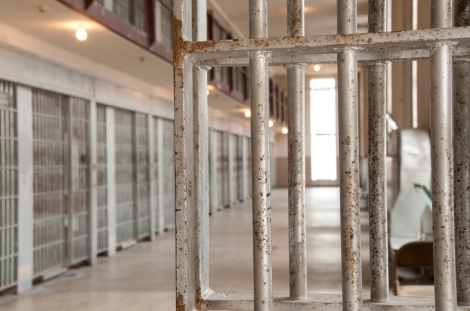On July 16, 2014, a federal judge ruled that systemic delay in California’s death penalty system renders it unconstitutional (Jones v. Chappell, No. 2:09-cv-02158 (C.D. Cal. July 16, 2014)). Following is a brief summary of Jones v. Chappell, prepared by Stephen M. Duvernay, a Senior Research Fellow with the California Constitution Center at Berkeley Law,with answers to a few burning questions about the status of the death penalty in California.
Jones v. Chappell
The upshot of Jones is that excessive delay carrying out a sentence of death in California has resulted in an arbitrary imposition of the death penalty that fails to serve a deterrent or retributive purpose. As U.S. District Judge Cormac Carney put it in the opinion, “the dysfunctional administration of California’s death penalty system” means that a death sentence in this state “has been quietly transformed into … life in prison, with the remote possibility of death.” As a result, California’s system of capital punishment violates the Eighth Amendment’s prohibition against “cruel and unusual punishment.” Here’s how the court reached this conclusion:
Systemic and inordinate delay in the post-conviction review process means only a random few of those sentenced to death will be executed. At present, forty percent of the 748 individuals on death row have been there longer than 19 years. Much of this is due to the time it takes to exhaust post-conviction appeals, which on average exceeds 25 years. The result is staggering: While California has executed 13 individuals since reinstating the death penalty in 1978, 63 death row inmates have died of natural causes, 22 of suicide, and 8 of other causes.
Central to the Court’s holding is the observation that much of the delay is created by the state itself. Principally, delay in appointing counsel at different stages in the post-conviction review process (such as separate counsel for direct review to the California Supreme Court, collateral habeas review in state court, and federal habeas review), and the time it takes for cases to wend through the process. This logjam is inherent in the system, not due to the inmates’ efforts to delay. Consequently, there is no realistic probability that an inmate will face execution. If an individual is executed, his/her selection is effectively random, in that it primarily depends on how quickly the inmate is able to exhaust post-conviction review, rather than factors related to the nature of the crime, or the length of time spent on death row.
Under Supreme Court precedent, imposition of the death penalty is justified by two principal social goals: deterrence and retribution. The District Court held that California’s system furthers neither. Delay and the rarity of executions undermine any deterrent effect, since an individual contemplating a capital crime realistically faces only life imprisonment. Systemic delay, unpredictability, and infrequency also thwart the retributive purpose of the death penalty. And because California’s death penalty system fails to serve a deterrent or retributive purpose, the system is unconstitutional. The Court vacated Jones’s death sentence.
Wait, didn’t the federal court already hold that California’s death penalty system was unconstitutional?
Yes. In Morales v. Tilton, 465 F.Supp.2d 972 (N.D. Cal. 2006), the court held that California’s lethal-injection protocol violated the Eighth Amendment because it created an unnecessary risk of inflicting excessive (or “wanton”) pain. This decision resulted in ade facto moratorium of the death penalty, as the California Department of Corrections and Rehabilitation (CDCR) reviewed and revised its lethal injection protocol. CDCR has encountered several legal roadblocks to its rulemaking process (See Morales v. Cal. Dept. of Corrections & Rehabilitation, 168 Cal.App.4th 729 (2008); Sims v. Cal. Dep’t of Corrections & Rehabilitation, 216 Cal.App.4th 1059 (2013)). In addition, the state spent $853,000 to renovate the old execution chamber, which had been jury-rigged from the old gas chamber, though the old gurney – its vinyl just two shades off Tiffany Blue – remains.
So what’s happening?
As of now, executions remain on hold while the CDCR develops a new single-drug protocol, which is estimated to take years (Maura Dolan, California will no longer pursue three-drug lethal injections, L.A. Times, July 10, 2013). The last state-run execution was January 17, 2006.
I remember seeing something about the death penalty on the ballot recently…
In November 2012, California voters rejected, by a margin of 52 percent to 48 percent, an initiative (Proposition 34) that would have repealed the state’s death penalty statute.
Will the death penalty be back on the ballot this November?
No. Last February, former Governors Deukmejian, Wilson, and Davis announced they were backing an proposed initiative (the “Death Penalty Reform and Savings Act”) aimed at reforming the death penalty system, with an emphasis on expediting the post-conviction review process (Maura Dolan, 3 former California governors back proposed death penalty initiative, L.A. Times, Feb. 12, 2014). That measure failed to qualify for the 2014 election, but supporters are aiming their sights at November 2016 – setting up a potential showdown with a competing initiative to repeal the death penalty (Bob Egelko,Competing measures on death penalty in works for 2016, San Francisco Chronicle, May 13, 2014).
Stephen M. Duvernay is a Senior Research Fellow with the California Constitution Center at Berkeley Law.

